Sensors for use with seawater or protected from salt spray corrosion in marine environments. Select instruments with titanium, ceramic, plastic or marine bronze parts which have a high resilience to corrosion from salt water.
Products
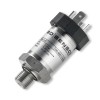 DMK457 Marine Approved Pressure Transmitter - Marine approved pressure transmitter with 4-20mA current loop output for shipbuilding with optional CuNiFe housing for sea-water compatibility
DMK457 Marine Approved Pressure Transmitter - Marine approved pressure transmitter with 4-20mA current loop output for shipbuilding with optional CuNiFe housing for sea-water compatibility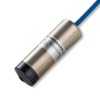 LMK458 Marine Approved Hydrostatic Level Transmitter - Marine approved level transmitter with 4-20mA output for measuring level of contents inside ship ballast, fuel, liquid cargo or wastewater tanks
LMK458 Marine Approved Hydrostatic Level Transmitter - Marine approved level transmitter with 4-20mA output for measuring level of contents inside ship ballast, fuel, liquid cargo or wastewater tanks
 LMK 858 Plastic Submersible Liquid Level Sensor with Removable Cable
LMK 858 Plastic Submersible Liquid Level Sensor with Removable Cable STT-26 Submersible Temperature Probe and Transmitter
STT-26 Submersible Temperature Probe and Transmitter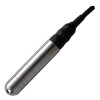 S12C SDI-12 Seawater Pressure & Temperature Transducer
S12C SDI-12 Seawater Pressure & Temperature Transducer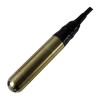 SWL Marine Bronze Submersible Level Sensor
SWL Marine Bronze Submersible Level Sensor
Applications
 50m seawater depth and temperature sensor with SDI-12 - SDI-12 digital interface liquid level and temperature sensor for submerging in seawater water to depth of up to 50 metres.
50m seawater depth and temperature sensor with SDI-12 - SDI-12 digital interface liquid level and temperature sensor for submerging in seawater water to depth of up to 50 metres.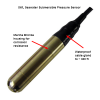 300 foot sea depth waterproof pressure sensor with 0-5V signal - Waterproof submersible pressure sensor for lowering to ~300 feet below sea level.
300 foot sea depth waterproof pressure sensor with 0-5V signal - Waterproof submersible pressure sensor for lowering to ~300 feet below sea level. Seawater pressure transmitter with 10 bar range and marine certification - Seawater pressure transmitter with following specs, 0-10 bar g, 4-20mA output, 1/2" connection, seawater resistant and marine certified.
Seawater pressure transmitter with 10 bar range and marine certification - Seawater pressure transmitter with following specs, 0-10 bar g, 4-20mA output, 1/2" connection, seawater resistant and marine certified. Sea water temperature probe and display for depth to 100 metres - Submersible temperature sensor for submersing in sea water down to a maximum depth of 100 metres complete with a local display for monitoring the temperature from the surface.
Sea water temperature probe and display for depth to 100 metres - Submersible temperature sensor for submersing in sea water down to a maximum depth of 100 metres complete with a local display for monitoring the temperature from the surface.
 Floating dry dock ballast tank 14ft range 4-20mA output submersible seawater level sensor
Floating dry dock ballast tank 14ft range 4-20mA output submersible seawater level sensor Ferry hull draft monitoring 3 bar absolute 4-20mA output seawater pressure sensor
Ferry hull draft monitoring 3 bar absolute 4-20mA output seawater pressure sensor Desalination plant seawater feed tanks 5m range 4-20mA output submersible level sensor
Desalination plant seawater feed tanks 5m range 4-20mA output submersible level sensor 10ft range 4-20mA output submersible sea tide depth sensor
10ft range 4-20mA output submersible sea tide depth sensor 3m range 4-20mA output submersible seawater dewatering tank level sensor
3m range 4-20mA output submersible seawater dewatering tank level sensor 9m 4-20mA ship fish storage seawater storage tank submersible level sensor
9m 4-20mA ship fish storage seawater storage tank submersible level sensor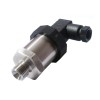 Duplex steel 1500psig 0-5V output seawater pressure sensor for water treatment use
Duplex steel 1500psig 0-5V output seawater pressure sensor for water treatment use 10 barg range 4-20mA output saltwater pressure sensor for sea water heat exchanger use
10 barg range 4-20mA output saltwater pressure sensor for sea water heat exchanger use
- 5m range 4-20mA output submersible seawater intake channel level sensor
- 10mH2O absolute 4-20mA marine approved seawater pressure sensor for bilge water leak testing use
- 60 barg range RS485 Modbus RTU seawater pressure sensor for flow control use
- 5 barg range 4-20mA output submersible seawater pressure sensor for measuring sea level
- Reverse osmosis desalination 100 psi g 4-20mA output seawater pressure sensor
- Reverse osmosis desalination 1,500 psi g 4-20mA output seawater pressure sensor
- Height & temperature of water sensor for tidally inundated tunnel
- Underwater 50 metre sea depth 4-20mA output sensor
- 6m deep ballast tank level transmitter with marine certificate
- 100 meter IP68 sea water level transmitter with Marine & ATEX approval
- Dockside sea water tide level transmitter up to 6 metres depth
- 3 kg/cm2 sea water pressure transmitter
Product Types
 Sea, Brackish or Salt Water Submersible IP68 Depth & Level Sensors - IP68 rated transmitters and transducers suitable for use with tidal and coastal salt water.
Sea, Brackish or Salt Water Submersible IP68 Depth & Level Sensors - IP68 rated transmitters and transducers suitable for use with tidal and coastal salt water.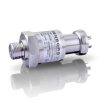 Sea Water Resistant Pressure Transmitters - Sea water corrosion resistant wetted parts 4-20mA current loop output pressure transmitters.
Sea Water Resistant Pressure Transmitters - Sea water corrosion resistant wetted parts 4-20mA current loop output pressure transmitters.
